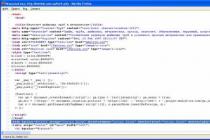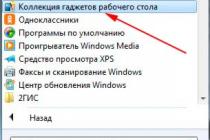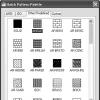It has become the norm for all of us that in the switchboards of residential buildings, it is mandatory to install introductory circuit breakers, modular outgoing circuit breakers, RCDs or differential circuit breakers for rooms and equipment where possible current leakage is critical (bathrooms, hob, washing machine, boiler).
In addition to these mandatory switching devices, almost no one needs to explain why a voltage monitoring relay is needed.
SPD or voltage relay
 Everyone started installing them everywhere. Roughly speaking, it protects you from 380V instead of 220V going into the house. At the same time, it is not necessary to think that overvoltage gets into the wiring due to an unscrupulous electrician.
Everyone started installing them everywhere. Roughly speaking, it protects you from 380V instead of 220V going into the house. At the same time, it is not necessary to think that overvoltage gets into the wiring due to an unscrupulous electrician.
Natural phenomena are quite possible that do not depend on the qualifications of electricians. A tree fell corny and cut off the neutral wire. 
Also, do not forget that any VL becomes obsolete. And even the fact that a new SIP line was brought to your house, and everything was installed in your house according to the rules, does not guarantee that everything is fine at the supply transformer substation itself - KTP. 
There, zero can also be oxidized on the bus bar or the contact on the transformer stud can burn out. Nobody is immune from this.
That is why all new switchboards are no longer assembled without UZM or LV of various modifications. 
As for surge protection devices, or SPDs for short, the majority here have doubts about the need to purchase them. But are they really needed, and is it possible to do without them?
Such devices appeared a long time ago, but so far no one is in a hurry to install them en masse. Few ordinary consumers understand why they are needed at all. 
The first question that arises for them is: “I installed a voltage surge relay, why do I need another SPD?”

No voltage relay will save you from this, but most likely it will burn out along with all other equipment. At the same time, the SPD does not protect against small drops of tens of volts or even a hundred. 
For example, devices for mounting in home shields, assembled on varistors, can only work when the change reaches values above 430 volts.
Therefore, both RH devices and SPDs complement each other.
Thunderstorm protection at home
A thunderstorm is a natural phenomenon and it is still not particularly possible to calculate it. In this case, lightning does not have to fall directly into the power line. Enough to hit next to her. 
Even such a lightning discharge causes an increase in the voltage in the network to several kilovolts. In addition to the failure of equipment, this is also fraught with the development of a fire.
Even when lightning strikes relatively far from the overhead line, impulse surges occur in the networks, which disable electronic components home appliances. A modern electronic counter with its filling can also suffer from this impulse. 
The total length of wires and cables in a private house or cottage reaches several kilometers.
This includes both power circuits and low current:



- security alarm
All these wires take on the consequences of a lightning strike. That is, all your kilometers of wiring receive a giant pickup, from which no voltage relay can save.
The only thing that will help and protect all the equipment, costing several hundred thousand, is a small box called an SPD. 
They are mounted mainly in cottages, and not in apartments of high-rise buildings, where the connection to the house is made by an underground cable. However, do not forget that if your TP is not powered by cable line 6-10 kv, and overhead power lines or overhead lines (SIP-3), then the influence of a thunderstorm on medium voltage can also be reflected on the side of 0.4 kv. 
Therefore, do not be surprised when, during a thunderstorm in your high-rise building, many neighbors fail at the same time WiFi routers, radiotelephones, televisions and other electronic equipment.
Lightning can strike a power line several kilometers from your home, but the impulse will still fly to your outlet. Therefore, despite their cost, all consumers of electricity need to think about buying SPDs. 
The price of quality models from Schneider Electric or ABB is approximately 2-5% of the total cost of rough electrics and the average switchboard configuration. All in all, it's not that big of a deal.
SPD classes
To date, all surge protection devices are divided into three classes. And each of them plays a role. 
The first class module extinguishes the main impulse, it is installed on the main input board.
After the largest overvoltage has been extinguished, the residual impulse is taken over by the SPD of the 2nd class. It is mounted in the switchboard of the house. 
If you do not have a class I device, there is a high probability that the entire impact will take the module II. And this can end very sadly for him.
Therefore, some electricians even dissuade customers from installing impulse protection. Motivating this by the fact that since you cannot provide the first level, then you should not spend money on it at all. There will be no sense.
However, let's see what not a familiar electrician says about this, but Citel, a leading company in lightning protection systems: 
That is, the text directly says that class II is mounted either after class 1, or AS A STANDALONE DEVICE.
The third module protects a specific consumer directly.
If you have no desire to build all this three-stage protection, purchase SPDs that initially come with the calculation of work in three zones 1 + 2 + 3 or 2 + 3. 
Such models are also produced. And will be the most one-stop solution for use in private homes. However, their cost will certainly scare away many.
Scheme of electrical panel with SPD
 The scheme of a switchboard that is well-equipped in terms of protection against all surges and surges in voltage should look something like this.
The scheme of a switchboard that is well-equipped in terms of protection against all surges and surges in voltage should look something like this.
At the input in front of the meter there is an introductory circuit breaker that protects the meter and circuits inside the shield itself. Next is the counter. 
Between the meter and the introductory machine there is an SPD with its own protection. The power supply company can, of course, prohibit such installation. But you can justify this by the need for surge protection and the meter itself.
In this case, it will be necessary to mount the entire circuit with devices in a separate box under a seal in order to prevent free access to bare current-carrying parts to the metering device. 
However, the issue of replacing the failed module and breaking the seals will become acute here. Therefore, coordinate all these points in advance.
After the meter are:
- voltage relay UZM-51 or equivalent


- simple modular machines
If there are no questions with the usual components when completing such a shield, then what should you pay attention to when choosing an SPD?
For operating temperature. Majority electronic types it is calculated on work at ambient temperature to -25C. Therefore, it is not recommended to mount them in street shields.
Second important point these are wiring diagrams. Manufacturers can produce different models for use in various earthing systems. 
For example, it will no longer be possible to use the same SPDs for TN-C or TT and TN-S systems. Correct work from such devices you will not achieve.
Wiring diagrams
Here are the main schemes for connecting SPDs, depending on the design of grounding systems, using the models from Schneider Electric as an example. Wiring diagram of a single-phase SPD in a TT or TN-S system: 
The most important thing here is not to confuse the connection point of the N-PE plug-in cartridge. If you plug it into a phase, you will create a short circuit.
Scheme of a three-phase SPD in a TT or TN-S system: 
Wiring diagram for a 3-phase device in a TN-C system: 
What do you need to pay attention to? In addition to the correct connection of the neutral and phase conductors, the length of these same wires plays an important role.
From the connection point in the terminal of the device to the ground bar, the total length of the conductors must be no more than 50cm! 
And here are similar schemes for SPDs from ABB OVR. Single phase option: 
Three-phase circuit: 
Let's go through some schematics separately. In the TN-C circuit, where we have combined protective and neutral conductors, the most common protection solution is to install an SPD between phase and ground.
Each phase is connected through an independent device and operates independently of the others. 
In the variant of the TN-S network, where the neutral and protective conductors have already been separated, the circuit is similar, but here an additional module is mounted between zero and ground. In fact, the entire main blow falls on him. 
That is why, when choosing and connecting the N-PE SPD, individual characteristics for impulse current are indicated. And they are usually larger than the phase values.
In addition, do not forget that lightning protection is not only a properly selected SPD. This is a whole range of activities.
They can be used both with and without lightning protection on the roof of the house. 
Particular attention should be paid to a high-quality ground loop.  One corner or pin hammered into the ground to a depth of 2 meters will obviously not be enough here. A good ground resistance should be 4 ohms.
One corner or pin hammered into the ground to a depth of 2 meters will obviously not be enough here. A good ground resistance should be 4 ohms.
Operating principle
The principle of operation of the SPD is based on the attenuation of the voltage surge to a value that the devices connected to the network can withstand. In other words, this device even at the entrance to the house, it dumps excess voltage to the ground loop, thereby saving expensive equipment from a destructive impulse.

Determining the status of the protection device is quite simple:
- green indicator - the module is working

At the same time, do not enable the module with a red flag. If there is no spare, then it is better to dismantle it altogether.
SPD is not always a disposable device, as some people think. In some cases, class 2.3 models can fire up to 20 times!
Circuit breakers or fuses before SPD
 To maintain uninterrupted power supply in the house, it is also necessary to install an automatic switch that will turn off the ultrasonic device. The installation of this machine is also due to the fact that at the time of the withdrawal of the pulse, the so-called follow current occurs.
To maintain uninterrupted power supply in the house, it is also necessary to install an automatic switch that will turn off the ultrasonic device. The installation of this machine is also due to the fact that at the time of the withdrawal of the pulse, the so-called follow current occurs.
It does not always allow the varistor module to return to the closed position. In fact, it does not recover after being triggered, as it should have been in theory.
As a result, the arc inside the device is maintained and leads to a short circuit and destruction. Including the device itself. 
In the event of such a breakdown, the machine operates and de-energizes the protective module. Uninterrupted power supply to the house continues.
Remember that this machine primarily protects not the arrester, but your network.
At the same time, many experts recommend installing not even an automatic machine, but modular fuses as such protection. 
This is explained by the fact that the machine itself during the breakdown is under the influence of a pulsed current. And its electromagnetic releases will also be under increased voltage.
This can lead to a breakdown of the trip coil, burning of the contacts, and even failure of the entire protection. In fact, you will find yourself defenseless in the face of a short circuit.


Therefore, installing an SPD after a circuit breaker is much worse than after a fuse.
Of course there are special circuit breakers without inductors, having only thermal releases in their design. For example Tmax XT or Formula A. 
However, considering this option for cottages is not entirely rational. It is much easier to find and buy modular fuses. In this case, you can make a choice in favor of type GG.
They are able to protect over the entire range of overcurrents relative to the nominal. That is, if the current has grown slightly, GG will still turn it off at a given time interval.
Of course, there is also a minus of the circuit with an automatic device or a PC directly in front of the SPD. We all know that thunder and lightning is a continuous, not a one-time phenomenon. And all subsequent strikes may not be safe for your home. 
After all, the protection had already worked for the first time and the machine knocked out. And you will not even guess about it, because your power supply has not been interrupted.
Therefore, some prefer to install an SPD immediately after the introductory machine. So that when triggered, the voltage is turned off throughout the house. 
However, it also has its own pitfalls and rules. The protective circuit breaker cannot be of any rating, but is selected according to the brand of the SPD used. Here is a table of recommendations for choosing automatic devices mounted in front of surge protection devices: 
If you think that the lower the nominal value of the machine will be installed, the more reliable the protection will be, you are mistaken. Impulse current and voltage surge can be of such magnitude that they lead to the operation of the circuit breaker, even before the moment when the SPD operates.
And accordingly, you will again be left without protection. Therefore, choose all protective equipment wisely and according to the rules. SPD is a quiet, but very timely protection against dangerous electricity, which is activated instantly.
Connection errors
1 The most common mistake is installing an SPD in a switchboard with a poor ground loop.There will be no sense from such protection. And the very first “successful” lightning strike will burn you both all the devices and the protection itself. 
Check the technical documentation of the SPD and consult with an experienced electrician responsible for electrical services, who should be aware of what kind of earthing system is used in your home. 
A surge protection device (SPD) is a device designed to protect the electrical network and electrical equipment from surges that can be caused by direct or indirect lightning, as well as transients in the electrical network itself.
In other words SPDs perform the following functions:
— Lightning protection electrical network and equipment, i.e. protection against surges caused by direct or indirect lightning effects
— Surge protection caused by switching transients in the network associated with switching on or off electrical equipment with a large inductive load, such as power or welding transformers, powerful electric motors, etc.
— Remote short circuit protection(i.e. from overvoltage resulting from a short circuit that has occurred)
SPDs have different names: network surge arrester - OPS (OPN), impulse voltage limiter - SPE, but they all have the same functions and principle of operation.
Operating principle and protection device of SPD
The principle of operation of an SPD is based on the use of non-linear elements, which, as a rule, are varistors.
A varistor is a semiconductor resistor whose resistance has a non-linear dependence on the applied voltage.
Below is a graph of the resistance of the varistor against the voltage applied to it:
The graph shows that when the voltage rises above a certain value, the resistance of the varistor decreases sharply.
How it works in practice, let's look at the example of the following scheme:
The diagram simply shows a single-phase electrical circuit in which a load in the form of a light bulb is connected through a circuit breaker, an SPD is also included in the circuit, on the one hand it is connected to the phase wire after, on the other - to ground.
In normal operation, the circuit voltage is 220 Volts, at this voltage the SPD varistor has a high resistance measured in thousands of Megaohms, such a high resistance of the varistor prevents current from flowing through the SPD.
What happens when a high voltage pulse occurs in the circuit, for example, as a result of a lightning strike (thunderstorm impact).
The diagram shows that when a pulse occurs in the circuit, the voltage increases sharply, which in turn causes an instantaneous, multiple decrease in the resistance of the SPD (the resistance of the SPD varistor tends to zero), a decrease in resistance leads to the fact that the SPD begins to conduct electrical current, shorting electrical circuit to the ground, i.e. creating a short circuit that trips the circuit breaker and disconnects the circuit. Thus, the surge arrester protects electrical equipment from the flow of a high voltage pulse through it.
SPD classification
According to GOST R 51992-2011 developed on the basis of the international standard IEC 61643-1-2005, there are the following classes of SPDs:
SPD class 1 —(also referred to as ClassB) are used to protect against direct lightning effects (lightning strikes into the system), atmospheric and switching surges. They are installed at the entrance to the building in the input-distribution device (ASU) or the main switchboard (MSB). It must be installed for free-standing buildings in open areas, buildings connected to an overhead line, as well as buildings with a lightning rod or located next to tall trees, i.e. buildings with a high risk of being directly or indirectly affected by lightning. Normalized by pulse waveform 10/350 µs. The rated discharge current is 30-60 kA.
SPD class 2 —(also referred to as class C) are used to protect the network from the remnants of atmospheric and switching surges that have passed through the SPD of the 1st class. They are installed in local switchboards, for example, in the inlet panel of an apartment or office. They are normalized by pulsed current with a waveform of 8/20 µs. The rated discharge current is 20-40 kA.
SPD class 3 —(also referred to as ClassD) are used to protect electronic equipment from the remnants of atmospheric and switching overvoltages, as well as high-frequency interference passing through SPDs of the 2nd class. They are installed in junction boxes, sockets, or built directly into the equipment itself. An example of the use of SPDs of the 3rd class are network filters used to connect personal computers. Normalized by pulsed current with a waveform of 8/20 µs. The rated discharge current is 5-10 kA.
SPD marking - characteristics
SPD characteristics:
- Rated and maximum voltage- the maximum operating voltage of the network for operation under which the SPD is designed.
- Current frequency — operating frequency network current for operation at which the SPD is designed.
- Rated discharge current(current waveform is indicated in brackets) is a current pulse with a waveform of 8/20 microseconds in kiloAmperes (kA), which the SPD is able to pass repeatedly.
- Maximum discharge current(current waveform is indicated in parentheses) — the maximum current pulse with a waveform of 8/20 microseconds in kiloAmperes (kA) that the SPD is able to pass once without failing.
- Protection voltage level- the maximum value of the voltage drop in kilovolts (kV) at the SPD when a current pulse flows through it. This parameter characterizes the ability of the SPD to limit overvoltage.
SPD connection diagram
The general condition for connecting an SPD is the presence of a fuse on the side of the supply network or a fuse corresponding to the load of the network, therefore all the circuits presented below will include circuit breakers (SPD connection diagram in the switchboard):
SPD connection diagrams (OPS, SPE) in single-phase network 220V(two-wire and three-wire):
Schemes for connecting SPDs (OPS, SPE) to a three-phase network 3800V
Schematic diagrams of SPD connection are as follows.
overvoltage- this is an abnormal mode of operation in electrical networks, which consists in an excessive increase in the voltage value above the permissible values \u200b\u200bfor a section of the electrical network, which is dangerous for the equipment elements of this section of the electrical network.
Electrical equipment insulation is designed for normal work at certain voltage values, in the event of an overvoltage, the insulation becomes unusable, which leads to equipment damage and is a danger to maintenance personnel or people who are in close proximity to the elements electrical networks.
Overvoltages can be of two types - natural (external) and switching (internal). Natural surges are a phenomenon of atmospheric electricity. Switching surges occur directly in electrical networks, the reasons for their manifestation can be large load drops on power lines, ferroresonance phenomena, post-emergency modes of operation of electrical networks.
Surge Protection Methods
In electrical installations, to protect equipment from possible overvoltages, protective equipment is used, such as non-linear surge suppressors (SPD).

The main structural element of this protective equipment is an element with non-linear characteristics. A characteristic feature of these elements is that they change their resistance depending on the voltage value applied to them. Let us briefly consider the principle of operation of these protective elements.
The arrester or surge arrester is connected to the operating voltage bus and to the ground loop of the electrical installation. In normal mode, that is, when mains voltage is within acceptable limits, the surge arrester (SA) has a very high resistance, and it does not conduct voltage.
In the event of an overvoltage in a section of the electrical network, the resistance of the arrester (AR) drops sharply, and this protective element conducts voltage, contributing to the leakage of the resulting voltage surge into the ground loop. That is, at the moment of overvoltage, the surge arrester (OPN) carries out the electrical connection of the wire to the ground.
Arresters and surge arresters are installed to protect equipment elements on the territory of electrical installations switchgear, as well as at the beginning and end of 6 and 10 kV power lines that are not equipped with a lightning protection cable.

To protect against natural (external) surges on metal and reinforced concrete structures of open switchgear, install lightning rods. On the high voltage lines with a voltage of 35 kV and above, a lightning protection cable (cable lightning rod) is used, which is located in the upper part of the power line supports along their entire length, connecting to the metal elements of the linear portals of open switchgears of substations. Lightning rods attract atmospheric charges to themselves, thereby preventing them from getting on the current-carrying parts of the electrical equipment of electrical installations.
To ensure reliable protection of the equipment of electrical installations from possible overvoltages, arresters and surge arresters, like all elements of equipment, must undergo periodic repairs and tests. It is also necessary, in accordance with the established frequency, to check the resistance and technical condition ground loops of distribution devices.

Overvoltages in low-voltage networks
The overvoltage phenomenon is also typical for low-voltage networks with a voltage of 220/380 V. Overvoltages in low-voltage networks lead to failure not only of the equipment of these electrical networks, but also of electrical appliances that are connected to the network.
To protect against surges in home electrical wiring, voltage relays or voltage stabilizers are used, sources uninterruptible power supply, which provide the corresponding function. There are also modular surge protection devices designed for installation in a home switchboard.

In low voltage switchgears enterprises, electrical installations, power lines for surge protection, special surge arresters are used according to the principle of operation, similar to high-voltage surge arresters.
Any household electrical appliances that work in home wiring are created by manufacturers to be powered by a harmonic sine wave signal with a voltage of 220 or 380 volts.
Sophisticated electronic technology uses rectified special blocks D.C..
When the shape and amplitude of the supply voltage changes, it greatly affects the quality of work of household consumers, reducing their resource.
Serious attention must be paid to the protection of household appliances:
- perform high-quality with your own hands or with the involvement of electrical specialists;
- ensure reliable operation;
- apply in areas of increased danger;
- use , excluding the impact of power failures from emergency situations from the power system;
- take care of, capable of withstanding lightning discharges, bringing great harm to the building and residents;
- counteract the household network, using devices with impulse surge protection SPDs.
What current pulses can occur in a household home network
The nature of the current flow through the equipment is taken as the basis for design electrical appliances and shown in the picture below.

An ideal sinusoid and a direct current rectified from it provide the nominal operating mode. It can be broken by an impulse that came from:
- lightning discharge;
- overvoltage of the power supply network by emergency modes.
The characteristics shown in the lower graphs are of a general nature. They change on a case by case basis. However, it should be immediately noted that the lightning impulse is much larger in magnitude, and 17 times longer in time (350/20=17).
The power of lightning is much higher than the impulse of a conventional overvoltage of the network, it has increased destructive abilities compared to it.
Therefore, to eliminate the aftereffects of lightning, specialized impulse-type protections are used.
Let's boil it down to four points:
- Impulse protections are calculated for the mode of being in readiness for operation when under the rated voltage of the network. In the event of overvoltages from accidents, they can be damaged, they themselves require protection.
designed to operate sinusoidal or direct currents. It is not adapted to work under a pulsed lightning discharge.
SPD protection by automatic devices is prohibited. For her, only fuses are selected. - According to the conditions of safe operation, it is better to use the housing of the first class SPD with a one-piece design without additional modules of a removable type.
- When choosing surge protection devices designed to handle lightning currents of more than 20 kA with impulse ratios of 10/350 milliseconds, it is necessary to focus on arresters.
- The installation of the SPD should be carried out in an electrical panel with metal case which best meets fire safety requirements.
Let's analyze it using the example shown in the picture below.

Electrical energy can be supplied to the house through an overhead line equipped with:
- self-supporting insulated wires SIP - VLI;
- ordinary wires without an outer layer of insulation - VL.
The presence of a dielectric layer on the conductive elements of an overhead line reduces the impact of a lightning discharge, affects the design of an operating SPD and its connection scheme.
When the house is powered from VLI, a grounding system is created according to the TN-C-S scheme. SPD is mounted between phase conductors and PEN. The place where PEN is split into PE and N wires at a distance of 30 meters from the building requires additional protection.
The presence of mounted external lightning protection on the house, the supply of metal communications of engineering systems affect the electrical safety of the building, the choice and connection scheme of the SPD.

Let's consider four variants of possible schemes.
Option 1
Terms
- without external lightning protection;
- with missing metal communications built into the house;
Solution
In such a situation, the probability of a direct lightning strike to the building is sharply reduced:
- insulation of VLI wires;
- lack of protection lightning rod and external metal exposed conductive parts.
Therefore, it is quite sufficient to protect against overvoltage impulses having a shape of 8/20 µs for current.
An SPD with a combined protection class 1 + 2 + 3 in a single housing of the brand DS131VGS-230 is quite suitable. Moreover, its protective function to eliminate lightning current pulses of the form 10/350 μs with an amplitude of up to 12.5 kA is unlikely to be used.
The range of current from overvoltage impulses can be selected from the range of 5÷20 kA, taking into account the period of thunderstorm days. It is easier to stop at the maximum value.
Option 2
Terms
Electricity is supplied through VLI. Building:
- without external lightning protection;
- with metal communications for water or gas pipelines built into the house;
- diagram of the TN-C-S earthing system.
Solution
Compared to the previous case, a lightning discharge of lightning through a pipeline with a power of up to 100 kA is possible here. This current inside the pipe will branch out to both ends of 50 kA. From our side of the house, this part will be divided by 25 kA into the ground loop and the building.
The PEN conductor will take its share of 12.5 kA, and the remaining half of the impulse of the same strength through the SPD will penetrate into the phase conductor. Therefore, it must be suppressed.
It is quite possible to choose the same SPD model as before, but its ability to protect against a lightning impulse with a shape of 10/350 µs and a swing of up to 12.5 kA will be absolutely necessary.
Option 3
Terms
Electricity is supplied through VLI. In a buiding:
- there are no metal communications built into the house;
- diagram of the TN-C-S earthing system.
Solution
A lightning discharge of 100 kA enters the lightning rod, is divided into two streams of 50 kA each into the grounding device and the electrical circuit of the building.

On the PE bus, it is re-branched into a PEN conductor and a 25 kA phase conductor. Thus, an impulse with a shape of 10/350 µs and a power of 25 kA will flow through the SPD. With such parameters, it is required to select protection.
Option 4
Terms
Electricity is supplied through VLI. At the building:
- external lightning protection is installed;
- there are metal plumbing communications built into the house;
- diagram of the TN-C-S earthing system.
Solution
A lightning discharge of 100 kA after the lightning rod in two flows of 50 kA diverges to the ground loop and wiring diagram input device. The second stream is also divided equally: 25 kA flows through the water supply pipes, and the next 25 are also divided by 12.5 kA into the PEN conductor and the phase conductor through the SPD. It can be chosen the same design as in the second option.
Features of the choice of SPD when powered by VLI
In the four examples analyzed, VLI with SIP was taken as the basis for the power supply of the building. They have a zero break, and, therefore, the appearance of a linear voltage of 380 instead of a phase voltage is unlikely. Therefore, the choice of SPD can be limited by the maximum voltage of the network.
Given the workloads in the four options for SPDs considered, it is quite possible to mount the latter in metal cabinets inside the house. Taking into account the small dimensions of the building, it is permissible to install one SPD between the potentials of the phase and the PEN conductor.
Option 5
Condition
Electricity is supplied to the building overhead power line with bare wires.
Solution
In such a situation, there is a high probability of a lightning discharge into the wires of the overhead line, and a TT grounding system scheme is used near the house.

It is required to create protection against penetrating impulses not only from phase wires relative to earth, but also from zero. The latter is recommended in most cases, but may not apply according to local conditions.
When connected to open wires of overhead lines, the design of the branch affects the electrical safety of the house. Its implementation is possible:
- cable;
- self-supporting insulated SIP wires, as on VLI;
- open wires without insulation.
With an air branch, less risks are provided by individually isolated SIP wires with a cross section of 16 mm kv and the creation of a gap relative to the phase and neutral conductors. In them, a direct lightning strike is practically unrealistic, but it can get into the cutting area near the insulators at the input. Then 50% of the strength of the lightning discharge will appear on the phase.
This case must be excluded:
- SIP plant inside the input device;
- by connecting the PE busbar of the shield to the grounding device with blocking the possibility of a lightning strike to this place from the outside of the building.
Without the complex fulfillment of these conditions, it will be necessary to install an SPD for 50 kA 10/350 µs, and if fulfilled, the lightning current into the open phase conductor with a power of 100 kA will be divided into two flows, of which 50 kA will go towards the building to the input pole. When he stands last on the line, then the entire discharge will enter the house, and if the overhead line is laid further, it will be divided into our building and go to others.
These conditions are decisive when choosing an SPD according to the strength of the lightning discharge.
On an overhead power line with open wires, a zero break is likely, which requires the choice of an SPD for a voltage of up to 0.4 kV, and not 220 volts.
When installing the SPD, the manufacturer's recommendations given in technical specifications according to connection diagrams in different grounding systems, their features. Otherwise, more harm than good is possible from the use of protection.
The role of the fuse in SPD protection
The flow of a thunderstorm usually occurs with a heavy wind, which can break the PEN conductor of the overhead line during or before a lightning strike. A phase current will flow through the working zero.
When a lightning strikes through an open phase wire, an SPD works out for us, through which an impulse from a thunderstorm and a current accompanying a PEN break will flow, along the chain: a fuse, a spark gap, a PE bus and a ground loop.
All these elements have a certain electrical resistance, which reduces the amount of current flowing. It can be calculated, determined by Ohm's law, the value of the follow current, compared with the characteristics of the SPD. If they allow operation at a larger value, then the fuse can be omitted.
The Electromir company explains with its video why it is necessary to install an SPD in any house.
(10 votes, average: 5 out of 5)Lightning is a powerful electrical discharge (Fig. 5.32), which is formed when clouds or the earth are strongly electrified. Lightning discharges can occur within a cloud, between neighboring electrified clouds, or between an electrified cloud and the ground. The electric field of the cloud has a huge intensity - millions of V/m. When large oppositely charged regions come close enough to each other, some electrons and ions, running between them, create a luminous ionized channel through which the rest of the charged particles rush after them. As the ionized channel (leader) moves towards the ground, the field strength at its end increases, and under its action, a response streamer is ejected from objects protruding on the surface of the earth, connecting with the leader. This is how lightning occurs. This feature of lightning is used to create a lightning rod.
All production facilities must be equipped with a lightning protection system. Lightning protection of industrial buildings is a mandatory element of safety that can prevent serious material damage and human casualties.
The primary action of lightning is direct impact - dangerous thermal and mechanical destruction of the building. With a direct lightning strike into the wires, an overvoltage occurs in the line, causing the destruction of the insulation of electrical equipment, and high currents cause thermal damage to the conductors.
Secondary action of lightning characterized by the formation of electric currents in closed conductive systems of the building (wiring, pipeline, etc.). The process of transferring electrical potentials that have arisen during a lightning strike through external metal structures (pipelines) to the protected building can lead to fire, explosion, failure of electrical and electronic equipment (Table 5.11).
Possible consequences of lightning
|
Manifestations danger |
Affecting factors |
Consequences |
|
Direct lightning strike on a building |
Discharge up to 200 kA, voltage 1000 kV, temperature 30,000°C |
Damage to people, destruction of parts of the building, fires |
|
Remote discharge during a lightning strike in communications (up to 5 km and more) |
Introduced lightning potential through power supply wires and metal pipelines (possible overvoltage impulse - hundreds of kV) |
Human injury, electrical wiring insulation failure, equipment failure, database loss, computer system failures |
|
Close (up to 500 m from the building) lightning strike |
Induced lightning potential in the conductive parts of the building and electrical installations (possible overvoltage impulse - tens of kV) |
Damage to a person, violation of electrical wiring insulation, fires, equipment failure, loss of databases, malfunctions of computer systems |
|
Switching and short circuits in the low voltage circuit |
Overvoltage impulse (up to 4 kV) |
Failure of equipment, loss of databases, failures in the operation of computer systems |
Another dangerous manifestation of lightning is shock wave. A lightning discharge is an electrical explosion and in some aspects is similar to the detonation of an explosive. It causes the appearance of a shock wave, dangerous in the immediate vicinity.
For example, at a current rise rate of 30,000 amperes per 0.1 millisecond and an ionized channel diameter of 10 cm, the following shock wave pressures can be observed:
- - at a distance from the center of 5 cm (border of the luminous lightning channel) - 0.93 MPa (destruction of structures, severe contusions of a person);
- - at a distance of 0.5 m - 0.025 MPa (destruction of fragile building structures and human injury);
- - at a distance of 5 m - 0.002 MPa (glass breaking and temporary stunning of a person).
The dangerous effect of lightning on a person can manifest itself in the following: contact injury (from induced potentials on metal parts of equipment), ophthalmic injury (lightning flash), step voltage (when lightning current spreads in the ground), blunt injury (due to the action of a shock wave), direct strike (direct lightning strike on a person).
When designing a lightning protection system, the purpose of the object, its design features and the geographical location of the region, which is directly related to the intensity of lightning activity, are taken into account.
Lightning protection of industrial buildings is developed based on the type of hazardous impact that occurs during an electric lightning discharge. All industrial facilities require individually selected protection measures against the effects of atmospheric surges. High-rise objects are exposed to the greatest danger, therefore, first of all, high-rise buildings, masts, pipes, power transmission line supports need protection.
The primary source of damage is the lightning current. Depending on the point of damage, the following sources of damage are distinguished (Table 5.12):
- - S- lightning strike into a building (construction);
- - S2- lightning strike near a building (structure);
- - S3- lightning strike in the communication line;
- - S4- lightning strike near communication lines.
Depending on the characteristics of the protected building (structure), a lightning strike can cause various damages. In practice, when assessing risk, there are three main types of damage that can occur as a result of a lightning strike:
- - D- harm to living beings;
- - D1- physical damage to the building (structure) and (or) communication lines;
- - D3- failure of electrical and electronic systems.
Damage to a building (structure) due to a lightning strike may be limited to a part of the structure or may extend over several structures. Damage may affect areas adjacent to the structure or environment(for example, chemical or radioactive contamination of the area).
Each type of damage, alone or in combination with others, can lead to various direct and indirect losses in the protected structure. The type of losses that occur depends on the characteristics of the structure and its parts. The following types of losses should be considered:
- - L- associated with the death and injury of people;
- - L2- with complete or partial destruction of public communications;
- - L3- with damage to cultural objects;
- - L4- economic (associated with the destruction of a building (structure), its part and (or) disruption or termination of activities).
Established combinations of possible damage and losses depending on the type of source)














